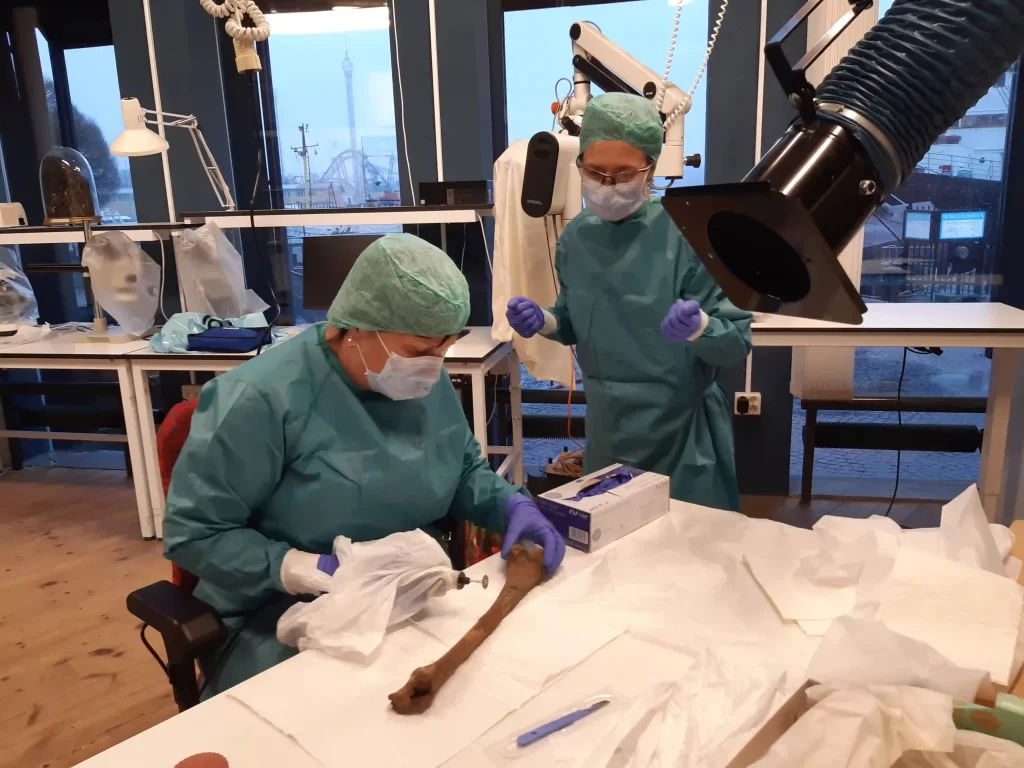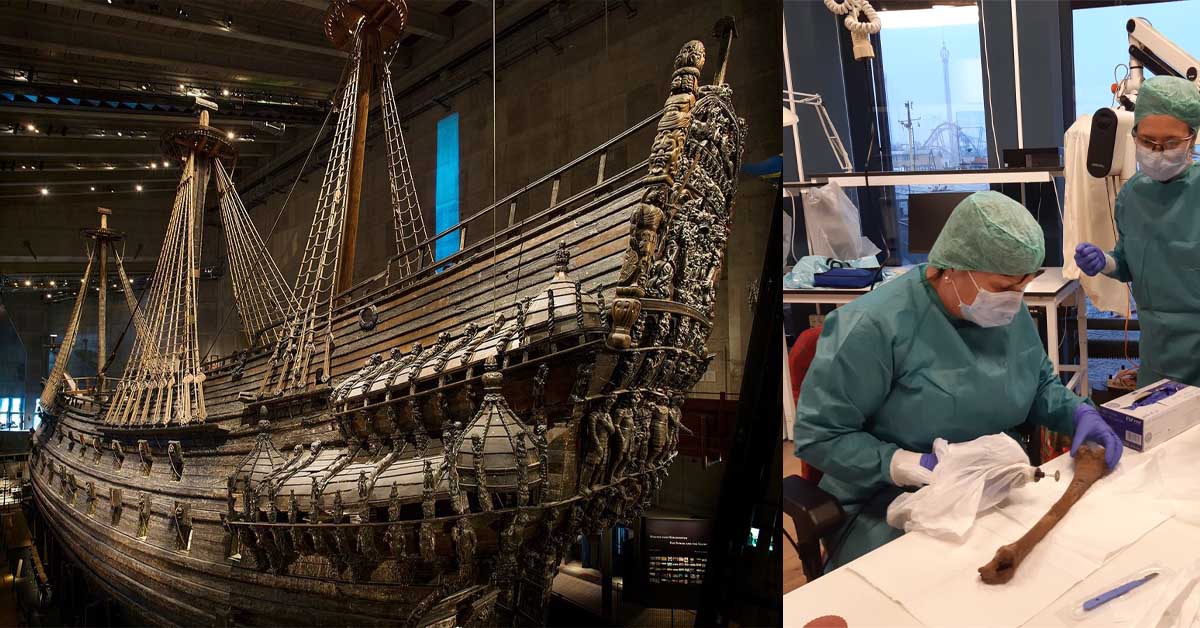The Untold Story of the Vasa: DNA Analysis Reveals Female Crew Member on 17th Century Swedish Warship
One of the crew on the 17th century Swedish royal warship Vasa has been confirmed to be a woman, not a man as originally believed.
Commissioned in 1625 by Sweden’s King Gustav II Adolf, Vasa was to be the flagship of Sweden’s new fleet of warships — better, stronger, faster, the dominant naval force on the Baltic Sea for the next three decades.
It couldn’t even dominate Stockholm harbour, sinking less than 400 feet from the dock on its maiden voyage on August 10, 1628.
Before the horrified king and assembled dignitaries, Vasa rapidly sank to the sea floor taking a crew of about 30 people down with it.
After the ship was rediscovered in 1956, it was gradually raised in a sequence of lifts between 1959 and 1961. The Vasa, so remarkably well-preserved that it is largely intact, and the wreck site were thoroughly excavated.
Human skeletal remains were found in the excavation. Osteological examinations revealed some information about the lost crew — approximate age, height, etc. — but modern technology, including DNA analysis, can reveal much more.
For the past 20 years, experts at the Vasa Museum have worked with immunologists, geneticists and pathologists at Uppsala University to systematically examine all the Vasa skeletons.
The challenges of the project are significant, starting with identifying which bones belong to a specific individual. Extracting DNA from skeletal remains that spent 333 years on the harbour bed is also very difficult.
One particular skeleton, dubbed G, initially classified as male, was upon review suspected of being female due to the shape of the pelvis. Subsequent DNA results also suggested they might have been female. There were no Y chromosomes found in the genetic sample. The DNA could have been contaminated and damaged, however, from its long underwater sojourn, so the evidence was not conclusive.

The result has now been confirmed thanks to an interlaboratory study with Dr Kimberly Andreaggi of the Armed Forces Medical Examiner System’sArmed Forces DNA Identification Laboratory (AFMES-AFDIL) in Delaware, USA. The AFMES-AFDIL is the American Department of Defense’s laboratory, specializing in human remains DNA testing from deceased military personnel. They have established a new testing method for the analysis of many different genetic variants.
“We took new samples from bones for which we had specific questions. AFMES-AFDIL has now analysed the samples, and we have been able to confirm that G was a woman, thanks to the new test”, says Marie Allen. […]
For the Vasa Museum the results of the DNA analysis are an important puzzle piece in the museum’s research into the people on the ship. Dr. Anna Maria Forssberg, historian and researcher at the museum, explains:
“We want to come as close to these people as we can. We have known that there were women on board Vasa when it sank, and now we have received confirmation that they are among the remains. I am currently researching the wives of seamen, so for me this is especially exciting, since they are often forgotten even though they played an important role for the navy“.
The team is expecting the results of the DNA analysis of the rest of the new samples shortly. Researchers hope to find out more about the crew members’ appearances — from big things like hair and eye color to minutiae like whether they had freckles or wet vs. dry ear wax — geographic origin, and propensities to certain illnesses.




